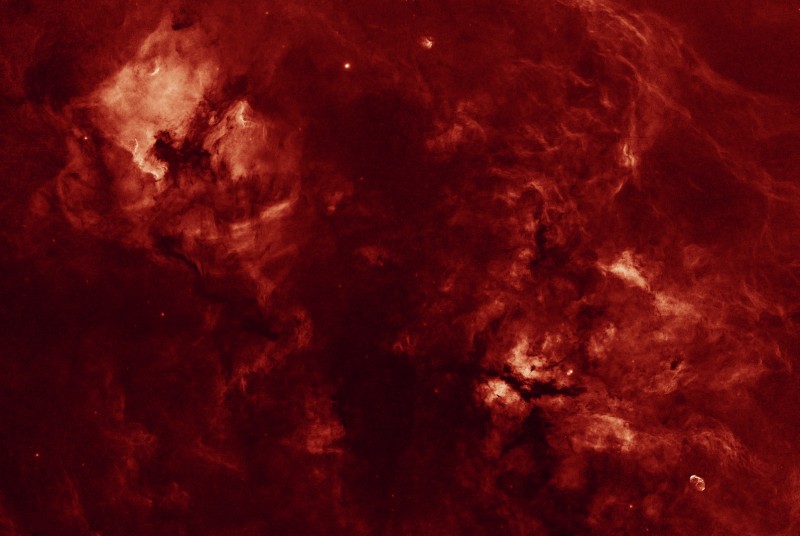Credit & Copyright: Igor Chekalin
Explanation:
The sky is full of hydrogen, though it can take a
sensitive camera and telescope to see it.
For example, this twelve-degree-wide view of the
northern part
of the constellation
Cygnus
reveals cosmic clouds of
hydrogen gas
along the plane
of our Milky Way galaxy.
The mosaic of
telescopic images was recorded through an
h-alpha filter that transmits only visible red light from
glowing hydrogen atoms.
Further digital processing has removed most of what is left
of the myriad, point-like Milky Way stars from the scene, though
bright Deneb, alpha star of
Cygnus and head of the Northern Cross, remains near top center.
Recognizable bright nebulae include
NGC 7000 (North America Nebula), and
IC 5070 (Pelican Nebula) at the upper left with
IC 1318 (Butterfly Nebula) and
NGC 6888 (Crescent Nebula) at lower right --
but others can be found throughout the wide field.
Want the stars back? Just slide your cursor over the picture.
digg_url = 'http://apod.nasa.gov/apod/ap080424.html'; digg_skin = 'compact';
1999 2000 2001 2002 2003 2004 2005 2006 2007 2008 2009 2010 2011 2012 2013 2014 2015 2016 2017 2018 2019 2020 2021 2022 2023 2024 2025 |
Январь Февраль Март Апрель Май Июнь Июль Август Сентябрь Октябрь Ноябрь Декабрь |
NASA Web Site Statements, Warnings, and Disclaimers
NASA Official: Jay Norris. Specific rights apply.
A service of: LHEA at NASA / GSFC
& Michigan Tech. U.
|
Публикации с ключевыми словами:
Cygnus - emission nebula - Лебедь - эмиссионная туманность
Публикации со словами: Cygnus - emission nebula - Лебедь - эмиссионная туманность | |
См. также:
Все публикации на ту же тему >> | |
